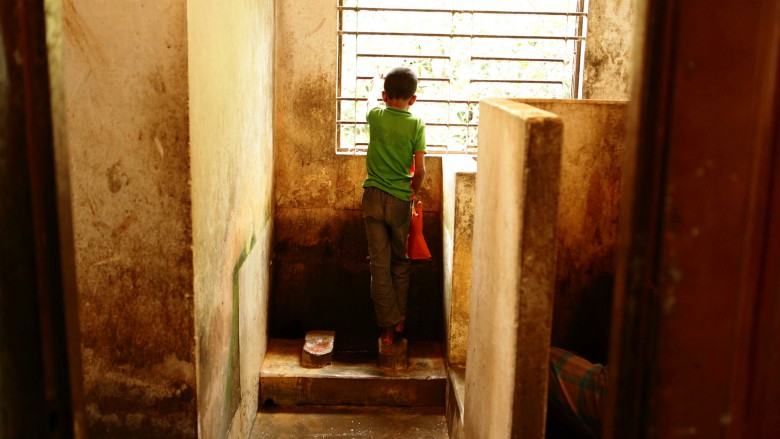India accounts for 33 percent of the global population without access to safe water and adequate sanitation. Good sanitation is indispensable for reducing many diseases and improving overall public health. There are also important economic consequences for not having it – the World Bank’s Water and Sanitation Program estimates that developing countries lose between one and seven percent of GDP annually due to poor sanitation. But encouraging take up of new sanitation methods and attention to hygiene isn’t always easy. It could be that households don’t understand the need, or they don’t have the money to make the investment. Experts are still working to understand what the barriers are to take up for improved sanitation, and they’re testing what mix of informational campaigns, credits and sanitation infrastructure might work to improve demand and usage. This evaluation will improve our understanding of the possible obstacles by looking at the effect of offering households microfinance loans for sanitation improvement, and the effect of combining this with an awareness campaign.
| India is home to 594 million people defecating in the open; over 50 per cent of the population. (Unicef) |
| Research area: | Early Childhood Nutrition, Development, and Health |
| Country: | India |
| Evaluation Sample: | 120 Gram Panchayat (a local governing institution that usually covers one or two villages) in rural Maharashtra India. Of these, 40 received the microfinance loan 39 received the loan and the awareness campaign, and 41 didn’t receive either. |
| Timeline: | 2012 – 2017. The awareness campaign ran from March 2015 through July 2015; the microfinance loans were offered starting in February 2015 and had a two-year repayment period. |
| Intervention: | Informational campaigns, micro loans |
| Researchers: | Orazio Attanasio, University College London; Britta Augsburg, Institute of Fiscal Studies, University College London; Bet Caeyers, Institute for Fiscal Studies, London; Sara Giunti, Institute for Fiscal Studies, London; Bansi Malde, Institute for Fiscal Studies, London |
| Partners: | Grameen Financial Services India; University College London; EDePo at the Institute for Fiscal Studies; FINISH (Financial Inclusion Improves Sanitation and Health) Society; YASHDA, Pune, India |
Context
The Indian Government has worked to improve sanitation through its Nirmal Bharat Abhiyan policy (formerly known as the Total Sanitation Campaign), but safe sanitation uptake and usage remains low. The 2011 Indian census reported that almost 50 percent of Indian households do not have access to a private or public latrine, meaning that over half a billion people still defecate in the open. In the area where the evaluation was carried out, the 2012 baseline survey conducted by the Indian Ministry of Drinking Water and Sanitation found that 27.4% of households reported having a toilet, although this didn’t necessarily indicate it was used.
